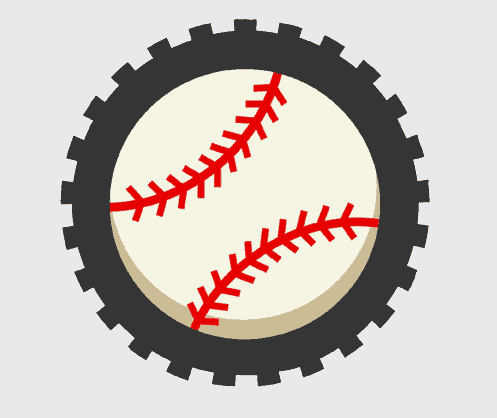Because this spring has been rather cruel to the White Sox, a positive report on a prospect has to come with strings attached.
Micker Adolfo returned to action in a 'B' game on Thursday morning, taking swings for the first time since being examined for a season-threatening UCL sprain.
He went 0-for-2 with a walk, but more importantly, it sounds like it can be a workable arrangement:
"I felt great being able to play in a real game in two weeks, much more adrenaline going because it's not the same doing sim games as it is playing in an actual game," Adolfo said. "I was seeing the ball well. Just gotta get my rhythm and timing again, and I'll be fine. My elbow felt great, didn't feel pain, and I'm just happy to be playing again!"
In the same game, though, Luis Robert was conked on the head by Fernando Tatis Jr. while diving into second base. He was lifted from the game for precautionary measures:
“He rung his bell a little bit,’’ said [Rick] Renteria, who said his level of concern was minimal.
“As soon as I said, ‘I’m going to take you out,’ he stood up, ‘No, you’re not.’ I said, ‘Yeah, we’re going to take you out, make sure you’re OK.’ ’’
Both Renteria and Robert downplayed any concern about the impact, and hopefully they're right, because Robert has acquainted himself well to stateside play during the first week of the Cactus League. He went 1-for-3 with a double during the 'B' game, and he's 1-for-4 with a well-earned walk so far.
Spare Parts
As Rob Manfred continues to dance around the question about whether baseballs became materially different objects over the past two years, researchers continue to find reasons why they're flying farther. This time, they're scanning the ball and seeing differences with the core. It doesn't explain the jump in homers by itself, but it jibes with all the others:
On top of the fact that the balls became bouncier as the core itself changed, previous research at FiveThirtyEight showed that they also became less air resistant. The decrease in drag is probably a result of a smaller, slicker baseball with lower seams. The change in air resistance could add an additional 5 feet to the travel distance of a fly ball. Combine all these factors together — a lighter, more compact baseball with tighter seams and more bounce — and the ball could fly as much as 8.6 feet farther. According to Nathan’s calculations, this would lead to a more than 25 percent increase in the number of home runs. Asked whether these changes in combination could have significantly affected the home run rate, MLB declined to comment.
And some pitchers are getting tired of MLB's evasion. Justin Verlander came armed to the discussion with graphs.
Lucas Giolito showed up hitting 95 in his first start, which he hopes will be more of the norm as he tries to regain the power that made him one of baseball's top pitching prospect, rather than somebody who can merely fill a rotation spot.
If Leury Garcia's early assignments (a lot of infield) were any indication, the White Sox sound committed to finding a way for Adam Engel to hit enough. That desire has resulted in more swing tweaks than MLB hits, but the quest has always been to reduce the stiffness in his swing that results in so many whiffs. He's got a leg kick this time around.
While we know more about outfield defense when it comes to the kinds of balls outfielders can track down, nobody has quite quantified how good outfielders are at minimizing damage when the ball drops.
This is all admittedly some very back-of-the-envelope math, and with a little more time and effort (and StatCast data) we could have a little more clarity on the matter, but we’re on the right order of magnitude here. It’s possible that good defense is worth 15-20 percent more than we had originally given it credit for in the outfield (and bad defense is worth 15-20 percent less). That’s a non-trivial amount of value that we’re ignoring and it’s because we stopped paying attention after the ball hit the ground.
If this were a "U Talkin' U2 To Me?" subpodcast, it'd be "What's Your Ejectionstyle?"
And Renteria's would be "Won't You Please Fight Me?/Okay, FINE!"
There’s a moment in the middle of this squabble when it looks like they have been sped up, but they haven’t been. They’re really gabbing and sticking their necks and faces out that much and that quickly. And for what? All they are racing toward is their inevitable deaths and the feeling of shame that will come over them at 3 am some night, after they’ve spent time teaching their grandchildren about sharing and what we owe to each other, when they realize they omitted the events of this inning. They didn’t mention what happens when we fail to hold out a little longer. So in addition to teaching lessons to the people they love, they also engaged in a bit of small but meaningful lying.
This is a late addition, but this lengthy transcript with Justin Upton is worth the time. Most notably, he makes free agency sound like an arbitration hearing.
The way I look at it is, you’re going into free agency and instead of teams telling you, ‘We love what you do. We want you to be part of our team. Can we work something out?’ I know from experience: Teams are calling and telling you what you don’t do well and why they don’t want you. ‘But, hey, will you sign for this?’ No! We just had a conversation about how bad I am and you want me on your team? No! I don’t want to sign with you. That’s the way the process is going right now, which is the opposite of what free agency’s supposed to be about. Don’t call if you don’t want me on your team. It’s not a good way to do business.
When I was a free agent, I was told by multiple teams, ‘Oh, you don’t play good defense.’ I was told how bad of a defender I was and how they weren’t going to pay me. Well, don’t call.






